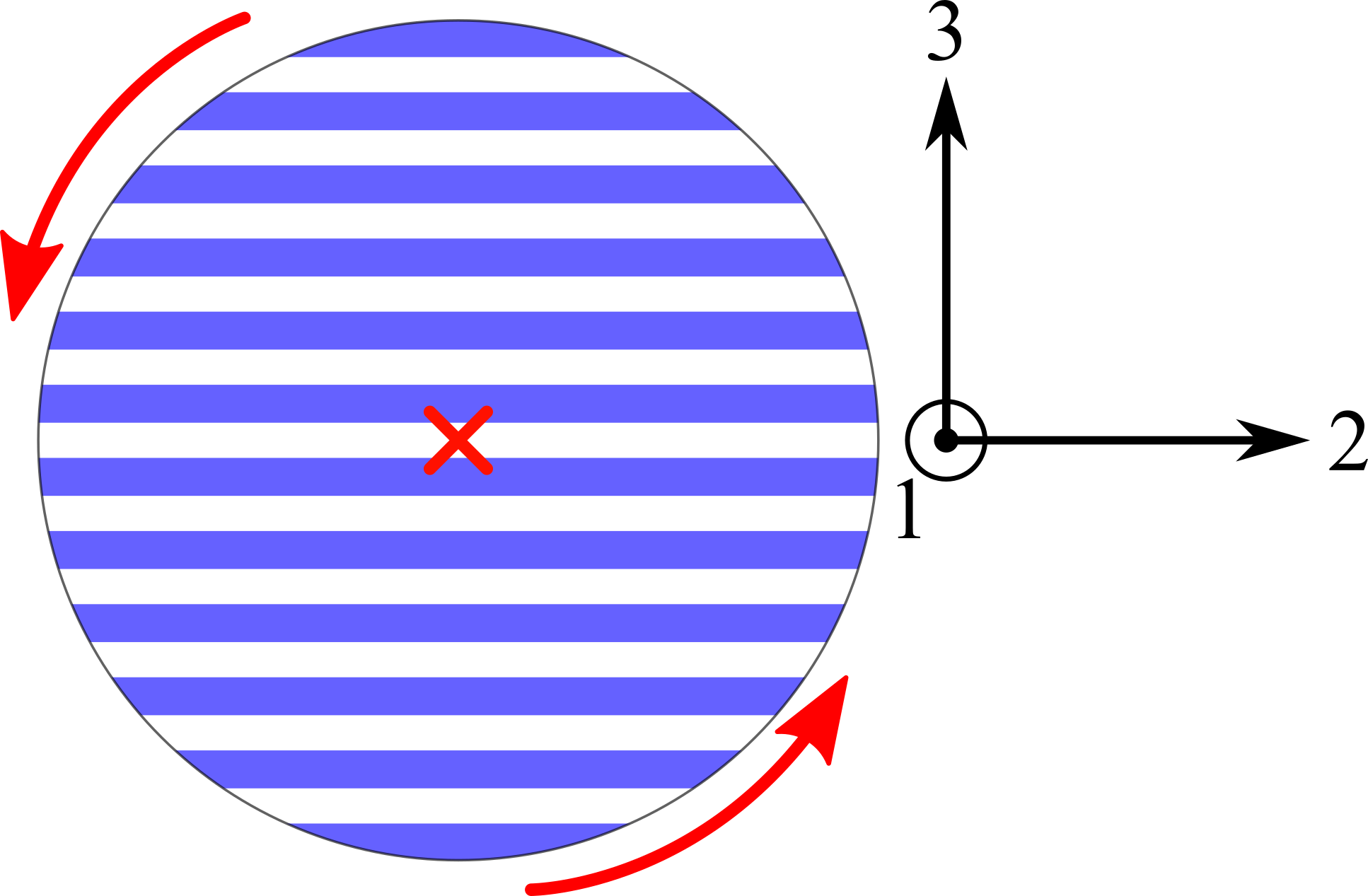 The situation I'm imagining is the one shown above, which is the cross section of a cylinder made of alternating layers of material. The material axes are shown where 1 and 2 are in the same plane and 3 is parallel to the stacking direction. If a cylinder composed of this material is subjected to a torque around its central axis as shown, would it be subject to axial stresses and therefore result in torsional warping? I read here and in textbooks that circular members don't have torsional warping but they are usually assumed to be made of isotropic materials. Would this be the case for this type of cylinder too?
The situation I'm imagining is the one shown above, which is the cross section of a cylinder made of alternating layers of material. The material axes are shown where 1 and 2 are in the same plane and 3 is parallel to the stacking direction. If a cylinder composed of this material is subjected to a torque around its central axis as shown, would it be subject to axial stresses and therefore result in torsional warping? I read here and in textbooks that circular members don't have torsional warping but they are usually assumed to be made of isotropic materials. Would this be the case for this type of cylinder too?
1 Answer
Yes, it will warp.
Imagine the blue layer material stiffer, with higher Young modulus E and shear modulus G and the white material as less stiff.
The blue material will be the dominant material in reacting to the torsion and will warp in developing both St Venanat shear stresses and warping stress which are axial tensile and compressive stresses and additional shear stresses.
- Torsion causing warping in the blue laminates.
- Additional axial stresses due to the warping.
The white layer will undergo similar deformation forced by the blue material deformation and will be stressed less, with a wavy step like undulations at the intersection line with blue material.
In these diagrams, I have not shown the white material for clarity.
-
$\begingroup$ This leads me to think that if all the layers were instead made of the same orthotropic material and were all oriented in the same way then there wouldn't be any warping torsion? $\endgroup$– enea19Commented Dec 22, 2019 at 3:11
-
1$\begingroup$ There still would be warping. Imagine you cut the cylinder by two axially perpendicular surfaces dividing it into 4 triangles all fused at the axis you call 1 or z axis. Say the stiff direction along the axis of symmetry of the top and bottom triangles. Now we glue all surfaces back and twist the cylinder. It will warp. Only isotropic material won't warp. $\endgroup$– kamranCommented Dec 22, 2019 at 3:30
-
$\begingroup$ Apologies, I didn't understand what you mean by Say the stiff direction along the axis of symmetry of the top and bottom triangles. $\endgroup$– enea19Commented Dec 23, 2019 at 4:35
-
$\begingroup$ Imagine a small 1 inch long coloreds toothpaste of tan material on top and bottom of the cross section and white on the sides. Representing the strong and weak directions. If you twist this paste it will warp. The strong material will wind the soft direction in a way similar to a cl $\endgroup$– kamranCommented Dec 23, 2019 at 6:16
-
$\begingroup$ My apologies, my phone's acting up. Continuing the comment it will warp like a twisted rope. $\endgroup$– kamranCommented Dec 23, 2019 at 6:31

